A wine steward’s job is to know about their list. It makes no sense not to take advantage of their expertise. – Karen MacNeil (author of The Wine Bible)
Have you ever been to a fancy restaurant and ordered a bottle of wine, only to have a sommelier bring the bottle to the table and open it with ceremony? If it happened did you think to yourself, “How much does this guy’s salary contribute unnecessarily to the cost of this bottle of wine, or to the ultimate meal bill?” This used to really bother me as simply being an extra expense that contributed little to the ultimate enjoyment of the evening. The more I learn about wine, the more I realize how much there is to potentially know. The sommelier is a professional who has dedicated his or her career to the pursuit of knowledge, not only about the wine regions of the world, and how to properly pair different food to different wine, but also to properly picking the wine list, procuring and managing the cellar for one or multiple restaurants, marketing those restaurants, and many other things. My purpose here is to give a little bit of information about the profession of sommelier, how they gain their insights and a few of their secrets into tasting wine. In addition, I think it is important to discuss how the advent of the designation of Master Sommelier, as it exists today is improving the level of restaurants across the country.
Rajat Parr, the sommelier for the restaurants, Michael Mina and RN74, both in San Francisco is famous for his discriminating palate. Frequently, diners will come in to the restaurant with a half drunk bottle of some obscure Old World wine, and with his discriminating nose, tongue, and fund of knowledge, can rattle off not only the grape and the country of origin, but the specific region down to the smallest parcel of vineyard and even the year the vintage was grown in! So how is it possible for anyone to taste a wine and be able to pull out of the air, a 1998 Volnay Burgundy from the Lafarge Clos des Chenes winery? Aside from sampling thousands of glasses of wine, there is actually a training course for Sommeliers.
The Court of Master Sommeliers was established in the United Kingdom in 1969 and in the United States in 1977. This program for sommeliers is composed of four rigorous levels of increasingly intensive coursework and examination, culminating in the final step – the Master Sommelier Diploma exam. This education in the business of beverages encompasses three primary areas: 1) practical restaurant service and salesmanship; 2) acquiring an encyclopedic and intimate knowledge on all world wine regions and grape cultivation, including all of the world’s wine laws, knowledge on aperitifs, spirits, liqueurs, beers, and even cigars; and 3) a proficiency in wine tasting, which means a demonstrated ability to discuss wine aromas, flavor assessment, wine structure, climate characteristics for the particular grape varietal, country and appellation of origin, and even vintage for the particular varietal. This is way beyond guessing whether the wine is a Merlot or a Barbaresco. Each level must be successfully completed before an invitation to enter into the next level, and each step adds progressive difficulty of examination in general beverage questions (both multiple choice and essay), abilities in service (i.e., the ability to evenly pour a magnum bottle into thirteen glasses, or proper food and wine pairing), and discrimination in blind wine tasting (identifying all the important characteristics from two glasses of wine, to six glasses, etc.) A candidate may not call themselves a sommelier until passing the second level (Certified Sommelier certificate). A passing grade is 60% for the first three levels, and 75% for the Master Sommelier Diploma. More statistics: On average, only 25% pass the third level (Advanced Sommelier Certificate), and the fourth level generally passes between 2 -10% each year. To put this into perspective, only 169 persons have earned the title of Master Sommelier since the Court began in 1969! It is staggering to read about the vast amount of information required to know.
There is even a competition for World’s Best Sommelier which is held every two or three years. This is always a two day competition of written and practical exams, service roles, and tasting of wines and spirits. The current champion is an Englishman named Gerard Basset.
The difference between attaining this diploma and that of any other diploma or degree of a professional nature is the requirement for an innately discriminating palate. For most people, it doesn’t matter how many glasses of wine a person tries, the ability to distinguish grape varietal, appellation and country of origin, soil type from a given vineyard, and vintage of a particular wine from the same wine from another vintage of growth, is a natural ability that cannot be taught.
Celebrity Sommelier Rajat Parr, in Jordan MacKay’s book, ”Secrets of the Sommeliers”, discusses in detail his approach to blind wine tasting.
He states, “Good tasters… must have a detailed mental data base of all the classic grape varieties, including where they are grown and how they tend to taste and smell in each place… The variety will become the foundation of your analysis of the wine. Occasionally, the provenance of a wine may express itself more loudly than grape variety. For example, some wines scream Italian, regardless of the grape used to make them, and limestone-based soils occasionally express themselves more adamantly than the variety grown in them. But great wines express both grape and place.” Parr goes on to say, “… it’s not enough to register that the grape variety is expressed. You must consider how it is expressed. Is (the glass of wine) fruit-forward and juicy, or is it more earthy and savory? If the expression of the wine is ripe and fruity, why? The answer may be that it was a great, warm vintage, or that the vineyard has wonderful exposure to the evening sun. If the expression is dense and supple, you might think the soil was rich in clay. Understanding a variety includes possessing a sense of how it is expressed in different soils and climates. That familiarity will be the foundation of your analysis as you layer on considerations of vintage and style of vinification.”
There have always been characteristic smells and tastes which come from different varietals, grown in different soils with different climates. However, the way each individual perceives these characteristics can be highly personal in how each of us would interpret the multitude of perceptible differences. In addition, sometimes any given varietal can express itself in a non-traditional way. I have written down before in a previous wine blog (wineblog #13: tasting wine), some of the most common descriptors identified with various grape varieties. I want to re-describe just a sampling of these through the eyes of a sommelier, again, with the help of Rajat Parr through his commentary in “Secrets of the Sommeliers”.
Cabernet Sauvignon descriptors classically include black current, and black cherry flavors. When it is picked overripe, the flavors can include jammy notes of plum and blackberry. If underripe, look for herbaceous hints of bell pepper, tomato, and tobacco leaves. The latter is seen more in French grown Bordeaux where the maritime climates often struggle to completely ripen the vines. This also results in younger Bordeauxs having more brutal tannins. The former descriptors usually are more evident in Napa and Australian Cabs. Long ripening grapes in warm weather may yield softer, more velvety tannins. Long aging of a Cabernet can evoke musty and complex wines, with mushroom and forest floor, meat and leather notes. Parr goes on to say that most New World Cabs have a mouth feel built on the suppleness of alcohol and rounded tannins.
Merlot classically can be described as soft and plummy, with floral (violet) and occasionally gaminess. Sometimes the New World warmth in the vineyard can make Merlot flabby and formless, but there can also be a higher degree of acidity than Cabernet. This can make the wine very easy to drink, and usually the varietal is bolstered on the shoulders of Cabernet Sauvignon or Cabernet Franc to improve its structure.
Pinot Noir grown in the Burgundy region of France gives the purest expression of the grape’s identity. Its color is lighter and brighter than Cabernet, and notes of rhubarb, raspberry, beet, earth, and spice can be conjured in the nose. Pinot can have a silky texture and higher acidity with bright flavors, but young Pinot sometimes can be austere with hard tannins. Oregon Pinots often have a similar earthiness to Burgundy, but they will commonly have a higher New World alcohol and fruitiness with looser structure.
Syrah can have widely different expression depending on where it is grown. Syrah grown in cooler climates, such as the Northern Rhone, tastes of black and white pepper, blackberry and leather. In New World regions, Syrah is much riper, still peppery but with higher alcohol and jammy blackberry and blueberry flavors. Costal California can produce more of a Rhone style Syrah. Australian Shiraz is usually ripened to an extreme jamminess, with even higher alcohol. The peppery flavors can be enhanced, but high alcohol wines tend to pair less well with food, so many sommeliers typically shy away from Australian and some Californian Syrahs/Shirazs.
Nebbiolo wines often have hints of orange in the color that turns more of a characteristic brick red when aged. These wines usually have aromatic hints of roses, tar, violets, and earthiness. Sometimes there can be a note of cherry, which can confuse with Sangiovese, but usually the high degree of acid and tannin give it away as Nebbiolo. These characteristics can be so overpowering, that young Piedmont wines can be difficult to drink. The tannins make your mouth feel dry when you drink a good Barolo or Barbaresco.
Training one’s palate to identify varietals, as Parr suggests, must begin and end with the classics. One must know the Old World wine regions backwards and forward. In most New World regions, there are no wine laws dictating which grape can be grown in which appellation. So any given vineyard can grow whatever varietal the winegrower chooses. Merlot Meritages might taste great from Chile, but they won’t taste like the Merlot based Bordeaux’s from Pomerol. Any classic region which produces the same type of wine year after year, decade after decade, and in some cases, century after century, tends to have better balance between all of the elements which make the wine great. That also gives a consistency which can more easily trigger identifying memories of any particular grape variety. The last point on tasting wine is this: Take notes on wines that you want to remember. If one is writing down notes on how a wine smells, how the fruit feels in your mouth, how the tannins impact the back of the throat, how the wine opens up in the glass after a period of time, the taster will not only get better with describing the wine, but the impressions formed will also become clearer and more retrievable, so it becomes easier to re-identify at a later date. The second reason for taking notes is to assist in remembering the wineries and regions. It is difficult enough to remember a few of the wineries in Napa, California. To even have a chance to remember any of the multitudes of wineries across the Old World, writing down the name, vineyard, appellation, varietal, and tasting notes are a necessity.
The considerable skill of wine tasting at a sommeliers level becomes more than a simple parlor trick when the sommelier uses this ability of discrimination to pick a unique wine list to match the food prepared at a high level restaurant. Sommeliers work behind the scenes, keeping up inventory and constantly tweaking the lists. Often Sommeliers are writing blogs, magazine articles or other essays for the purpose of educating others. In many cases, the wine menus of their restaurants will include informative vignettes on particular bottles or regions. Like most people, I don’t have a friend or neighbor who happens to be a Master Sommelier, so I rely on, more than any other source, the writings of the myriad of sommeliers that have a penchant to write about what they know and like. The quality of the restaurant sommelier has never been as high as it is today. In many cases, the reputation of any given restaurant is made not by just the quality of the food, but also of the quality of the wine list, in terms of depth and breadth, and how well it suits the offerings on the plate. The presentation of the wine at the table is extremely important to some, and the best sommeliers are able to educate their wait staff to very high levels of knowledge and service.
I can remember a memorable dinner that my wife and I had with one of my partners and his wife at Valentinos, an Italian restaurant at The Venetian Hotel in Las Vegas. Throughout the evening we went through an excellent meal with courses that had been expertly paired with wines of the sommelier’s choice. The evening ended at 2 am, drinking Grappa in the Venetian’s wine cellar with the sommelier! This was a memorable night that will never be forgotten.
Wine tasting tips from professional sommeliers can certainly elevate a person’s ability to discriminate specific details in the vinification of a grape. I write about this in a blog whose overlying mission is cellaring wine because the fundamental point to cellaring wine is to find a superior bottle of wine at the right price point which will improve with age. Not every bottle can be that iconic wine, representative of terroir and varietal. But if one can identify those elements which makes one wine great, one wine brilliant, and still another iconic, then perhaps one can identify similar attributes in lesser priced, but equally cellar worthy wines. The bottom line for me is this: It is not my job to be a professional wine taster. If I was I might not like drinking wine as much. It is the sommelier’s job to know as much about wine regions, wine service and wine pairings as they can. I don’t look at the sommelier as someone who is simply trying to sell me a more expensive bottle. The knowledge they possess if tapped into properly, can improve your dining experience, and also improve and diversify the quality of your own cellar. That is all for now.
Cheers,
Karl

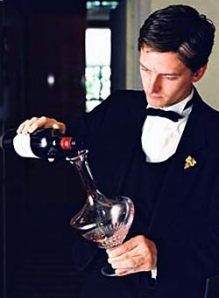

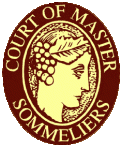

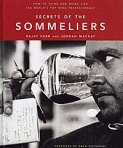
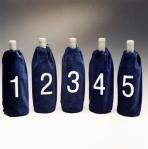

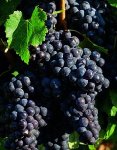
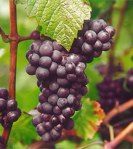
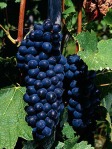

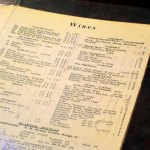

Bravo to the Nebbiolo!!!
-CTR